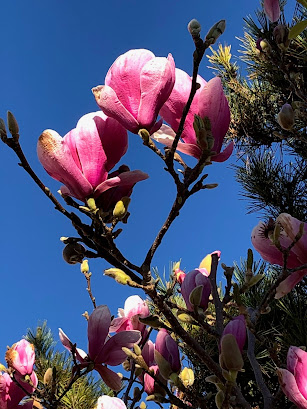Almost every list of mindfulness techniques includes some kind of breathing. I’m in favor of breathing. It keeps us alive. Here are four things to do to make breathing easier.
1. Quit smoking. If you don’t smoke, you’re already ahead and you can just cross this off the list. If you do, I encourage you to quit when you’re ready. It will help.
2. Stretch. Breathing uses muscles. Muscles work better when they have some flexibility. In the context of breathing, we want to stretch the muscles of our torsos, so do a few side bends, a forward bend or two, and maybe a bit of a backbend every once in a while.
3. Do my favorite exercise. Really. It’s my favorite. And you get to do it lying down. Lie on your back on a firm surface (bed is ok, but the floor is better) with your knees bent and your feet flat. Lift your arms toward the ceiling and put your hands together so that they are directly over your shoulders. Holding your head still, move your hands from side to side, keeping your arms straight (one shoulder will move off the ground when you go to one side, the other on the other). Do this ten times. Now do it again, but this time move your head along with your arms. After ten repetitions, do a set where you turn your head away from your arms. That’s it. It feels good and it loosens up all the tiny little joints in your thoracic spine so that you have more room to expand your ribcage when you breathe.
4. Practice. When we get stressed out, we tend to breathe shallowly, using the muscles of our neck to lift our shoulders instead of using our diaphragm and abdominals to breathe lower into our bellies. When we practice deep breathing, it becomes habitual.
If you want, ignore all of these ideas except this one: keep breathing. The world needs you.






